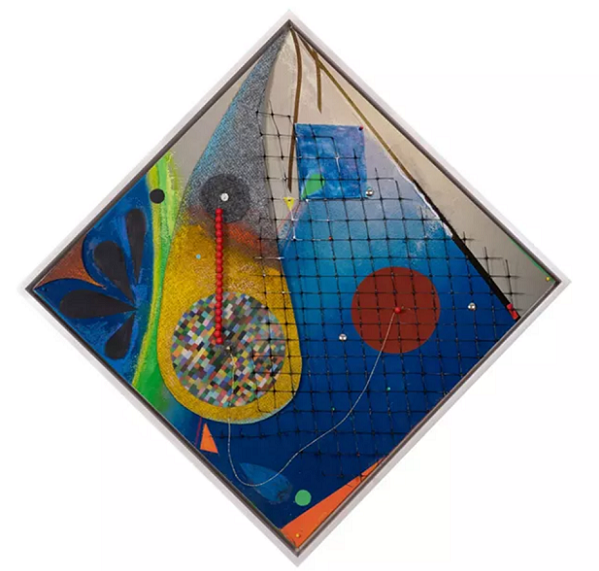
If you are in Vermont, you still have today and tomorrow (July 6, 2025) to see Carl E. Hazlewood’s “Infinite Passage”— a retrospective exhibition of paintings, drawings and installation works by the Guyanese-born artist, curated by Serubiri Moses and K. Anthony Jones. The exhibition is on view at the Brattleboro Museum & Art Center at 10 Vernon Street, Brattleboro, Vermont. Alice Dodge (Seven Days) describes, “The Guyanese artist presents a solo show of abstract mixed-media paintings that draw on his early childhood in the Caribbean and the American history of race.” [If you missed this exhibition, stay tuned for other shows by following carle.hazlewood.]
[. . .] The theme of migration — the freedom to move across borders and, conversely, the history of forced migration through the Middle Passage from Africa to the Caribbean and U.S. during the transatlantic slave trade — figures prominently in “Infinite Passage,” a retrospective of works by Guyanese-born artist Carl E. Hazlewood at the Brattleboro Museum & Art Center.

The show, cocurated by Serubiri Moses and doctoral candidate K. Anthony Jones, presents abstract paintings, drawings and a site-specific installation. Hazlewood’s visual language is playful and exuberant, with bits of tape, metallic thread, beads, tacks, utility carpet and roofing felt, among other materials, seamlessly integrated with paint, graphite and oil pastel. Bright, saturated color transports the viewer from soggy Brattleboro straight to the Caribbean.
In a conversation on June 3 with Ugandan curator Moses and scholar Rinaldo Walcott, chair of Africana and American Studies at the University at Buffalo, Hazlewood explained that his work is rooted in the landscape of Guyana and in his childhood there. The artist was born in 1951 with a congenital heart defect. Unable to go to school and often ill, he spent much of his time alone, reading classic stories such as Robert Louis Stevenson’s Treasure Island and Jonathan Swift’s Gulliver’s Travels.
Hazlewood described his voracious love of drawing and painting as a child. Though his mother told him to stay indoors when she left for work, he often ventured out to make things out of clay; when she got home, she pretended not to notice that he was covered in mud. “It was a way for me to engage with the world. As a child alone … it became a way of connecting to reality,” Hazlewood said. “It sort of made me real.”
In those early years, he also literally saw things differently. His vision was terrible, he said, and until getting glasses, “everything was a blast of color and light.” [. . .]
The artist’s BlackHead is an amorphous character, a self that has both been defined by the body and liberated from it. Unlike many abstract paintings of the 20th century, which concern themselves only with internal formal relationships, Hazlewood’s titles position his works looking outward as part of a joyful Black cultural diaspora.
Another figure who is present, if not pictured, in his work is Anansi the spider, a trickster in African and Caribbean folklore. In stories, Anansi is often in a jam — sometimes of his own creation — but always manages to get out of it through cunning or resourcefulness. (On Sunday, June 15, Grumbling Gryphons Traveling Children’s Theater will bring his stories to life in “Anansi, the Trickster Spider: A West African Folktale”; see details.) Hazlewood said he identified with Anansi because the spider is a survivor: “He’s always in trouble, like we are.” [. . .]
For full review, read https://www.sevendaysvt.com/arts-culture/art-review-carl-e-hazlewood-at-brattleboro-museum-43733134
[Photos above: 1) “BlackHead Anansi at Sea” and 2) “BlackHead Sinker.”]
